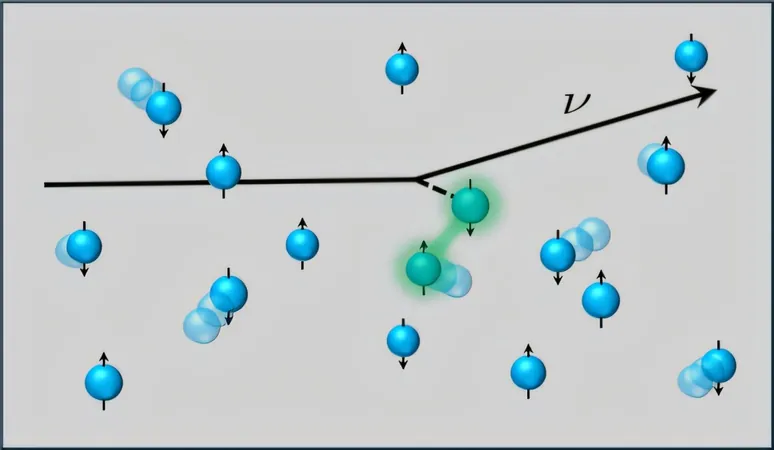
Groundbreaking Research Offers New Insights into Neutron Stars’ Spin and Density Correlations!
2024-11-27
Author: Wei Ling
Introduction
In the dramatic aftermath of a supernova explosion, one of the universe's most fascinating remnants can emerge: the neutron star. These celestial bodies are formed when a star reaches the end of its life cycle, collapsing under the force of gravity and causing protons and electrons to merge into uncharged neutrons. The resulting dense substance is known as neutron matter, a state of matter unlike anything we experience on Earth.
Collaborative Research
A collaborative team of scientists from the United States, China, Turkey, and Germany recently embarked on cutting-edge research to enhance our understanding of neutron matter. By employing ab initio simulations—calculations grounded in the most fundamental principles of nuclear physics—they explored spin and density correlations within neutron matter at unprecedented neutron densities. Spin and density essentially describe the likelihood of locating a neutron in a specific position, alongside its directional spin, both of which are crucial for understanding how neutrinos interact as they traverse dense environments, particularly during core-collapse supernova events.
Breakthrough Innovations
The findings of their study have been published in the prestigious journal *Physical Review Letters*, presenting novel insights that could alter our perceptions of these enigmatic objects. One of the standout innovations from this research is the introduction of the "rank-one operator method." This revolutionary algorithm significantly reduces the computational burden typically associated with simulating multi-particle systems in neutron matter. By simplifying the complex mathematics involved in neutrino transport through dense nuclear environments, this method has proven to enhance computational efficiency substantially. Impressively, the rank-one operator method is not just limited to neutron physics but is being applied across various domains of nuclear physics, showcasing its versatility.
Implications for Astrophysics
The implications of this research extend far beyond academic interest. Understanding the intricacies of neutron stars is essential for accurate simulations of supernova explosions—phenomena that are fundamental to our understanding of the universe. Notably, in a core-collapse supernova, nearly all energy released is carried away by neutrinos. This outflow stimulates surrounding neutron-rich matter, heightening the probability of an explosive event.
Conclusion
As we deepen our understanding of neutron stars and supernovae, we edge closer to unlocking the mysteries of the cosmos, paving the way for advances in astrophysics that could reshape our knowledge of the universe's birth and evolution. Stay tuned for more discoveries that are sure to keep you on the edge of your seat!



 Brasil (PT)
Brasil (PT)
 Canada (EN)
Canada (EN)
 Chile (ES)
Chile (ES)
 España (ES)
España (ES)
 France (FR)
France (FR)
 Hong Kong (EN)
Hong Kong (EN)
 Italia (IT)
Italia (IT)
 日本 (JA)
日本 (JA)
 Magyarország (HU)
Magyarország (HU)
 Norge (NO)
Norge (NO)
 Polska (PL)
Polska (PL)
 Schweiz (DE)
Schweiz (DE)
 Singapore (EN)
Singapore (EN)
 Sverige (SV)
Sverige (SV)
 Suomi (FI)
Suomi (FI)
 Türkiye (TR)
Türkiye (TR)